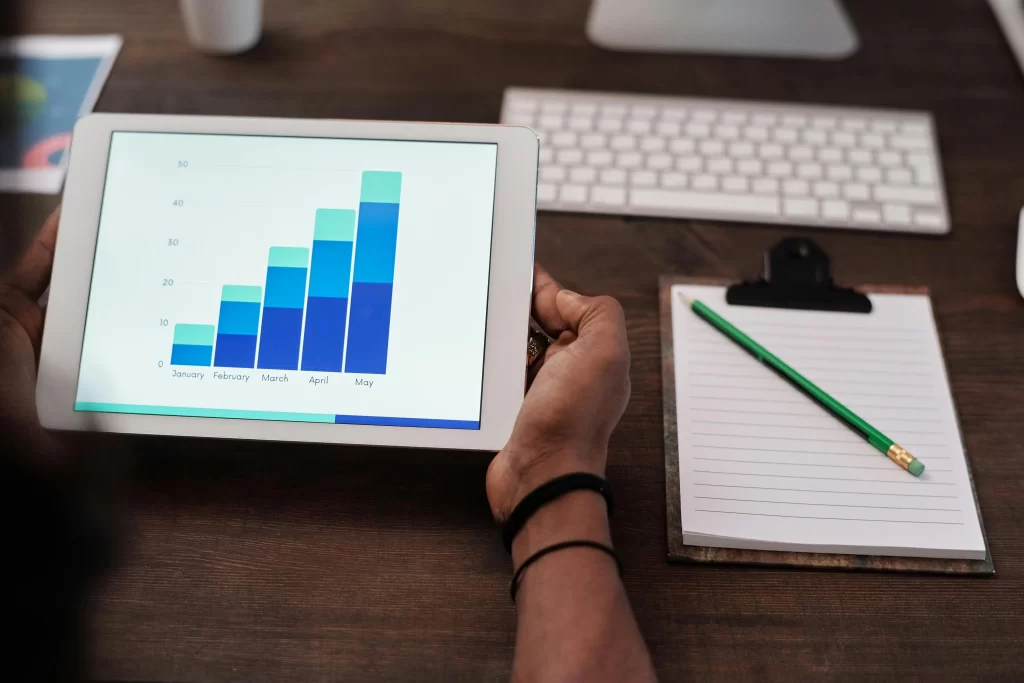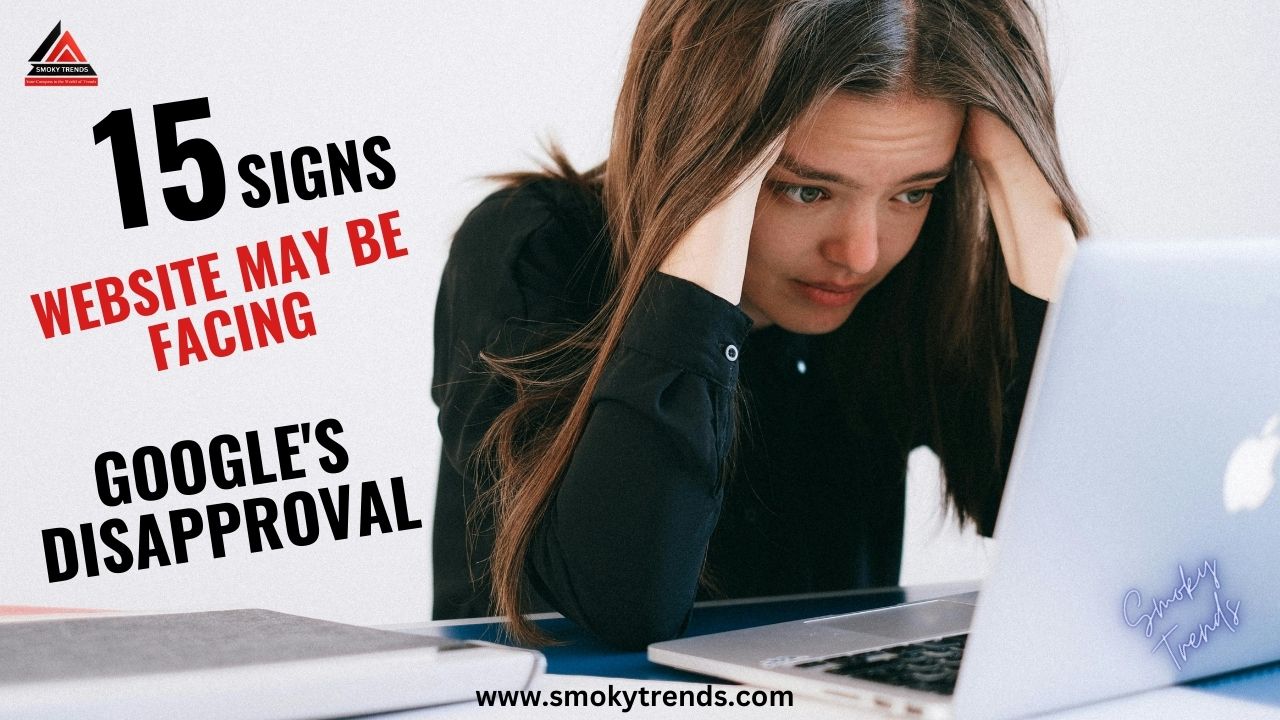15 Signs Your Website May Be Facing Google’s Disapproval
Contents
- 1 15 Signs Your Website May Be Facing Google’s Disapproval
- 2 Google’s Disapproval
- 3 Signs that Indicate Google’s Dislike
- 4 Backlink Issues
- 5 Thin Content or Quality Issues
- 6 Keyword Stuffing
- 7 Under Optimization
- 8 Domain Not Indexed
- 9 Crawling and Indexing Issues
- 10 Low Value/Duplicate/Spam Content
- 11 Broken Links
- 12 Under/Over Optimized Content
- 13 High Bounce Rate
- 14 Manual Penalties
- 15 Black Hat Practices
- 16 Bad Link Neighbourhoods
- 17 Coding Errors and Excessive 404’s
- 18 Mobile-Friendliness and Responsiveness
- 19 Tips to be Used
- 20 Conclusion
Google’s Disapproval
In this world of the Internet and digital technology, a website’s Google ranking can make or break your online presence. When you see a significant drop in visibility and traffic, it is a clear sign that Google has started to dislike your website. Understanding the signs that indicate Google’s disapproval is important for maintaining a strong online presence.
Signs that Indicate Google’s Dislike
Here are some key signs that Google may not be fond of your website:

Backlink Issues
Backlink issues can indicate Google’s dislike towards your site. Signs include sudden drops in search rankings, penalties, or manual actions. A high volume of low-quality or third-class backlinks, unrelated anchor text, or links from spam websites can harm your site’s reputation. Unnatural patterns of link growth, too much common linking, and links from unrelated or suspicious sites may trigger Google’s algorithmic filters.
Additionally, links from punished sites or networks can negatively impact your site’s credibility. Monitoring your backlink profile, denying harmful links, amp mobile, and focusing on natural, high-quality links are essential strategies to avoid Google’s disapproval and maintain a healthy search presence.
Thin Content or Quality Issues
“Thin content” refers to webpages with less real information, often containing minimal text, duplicate content, or low-quality content including landing pages. Irrelevant content can result in a decreased ranking and reduced visibility on search engine results pages. Signs indicating Google’s disfavor include low search engine rankings, lack of organic traffic, high bounce rates, and poor user engagement metrics which directly affect advertising with Google ads.
Additionally, usual indexing issues, manual penalties, and decreased visibility in search engine results pages (SERPs) may signal Google’s dislike of a site’s content quality. Focus on creating valuable and original content that answers user goals or purposes that can provide meaningful solutions to improve rankings. Regularly updating and optimizing content can boost site authority and relevance to search engines.

Keyword Stuffing
Keyword stuffing occurs when bloggers or creators use too many keywords in an attempt to manipulate search engine rankings. Signs of keyword stuffing include repeated or irrelevant keywords, unnatural keyword placement, and content that lacks readability. Google may penalize sites engaging in keyword stuffing by lowering their search rankings or even removing them from search results altogether.
High keyword density, irrelevant keywords, and low-quality content are signals to Google’s algorithms. To avoid penalization, focus on creating high-quality, relevant content that provides value to users while naturally including keywords in a meaningful way.
Under Optimization
Under optimization, signs indicate Google’s disfavor towards a site including low search rankings, minimal organic traffic, and lack of visibility in search results. Poor or outdated content, slow loading speed, and poor mobile optimization are also warnings. Additionally, a lack of backlinks from reputable sites and neglecting meta descriptions and title tags can affect search engine performance.
Keyword stuffing and duplicate content may trigger Google penalties. Ignoring user experience signals such as high bounce rates and low dwell time further signals a site’s disapproval with Google. Solving these issues through SEO strategies is essential for improving site performance and rankings.

Domain Not Indexed
Signs of a domain not indexed by Google indicate possible issues with site visibility and search engine favor. A lack of indexation may arise from technical errors like robots.txt blocking or meta tags directing search engines not to crawl. Newly launched sites or those with limited content may face delays in indexing.
Also, punished domains or those with low-quality content risk exclusion from Google’s index. Poor site structure, duplicate content, or excessive use of tags also stop indexation. Addressing these issues through audits, content optimization, and best SEO practices is essential to enhance visibility and regain Google’s favor.
Crawling and Indexing Issues
The decline in search ranks and a site’s removal from search results are indicators of crawling and indexing problems and Google’s disapproval of the site. Indicators of basic issues include pages that are not indexed or slowly indexed. Robots.txt file errors or meta robots tag errors might prevent crawling.
Duplicate content across pages or consistency issues confuse Google’s indexing process. Broken internal links and excessive redirects disrupt the crawling process and may result in pages being overlooked. Moreover, URL parameters and improper use of tags can prevent important pages from being indexed. Resolving these issues immediately is essential to regain Google’s trust and improve site visibility.

Low Value/Duplicate/Spam Content
Google’s disregard for a site is clear through signs of low-value, duplicate, or spam content. Such indicators include a decline in search rankings, decreased organic traffic, and potential penalties. Thin or duplicated content, short depth or originality, harms user experience and credibility.
Keyword stuffing, doorway pages, and masking or hiding techniques violate Google’s guidelines and invite penalties. Too many ads and affiliate links disturb user engagement and authenticity. Also, plagiarized or damaged content from other sources raises the signal for Google’s algorithms. Strongly solving these issues by focusing on quality, originality, and relevance in content creation is essential for regaining Google’s favor and improving site performance.
Broken Links
Broken links show 404 error pages or dead-end URLs indicating Google’s disfavor towards a site. These links disturb user experience, resulting in frustration and decreased engagement. Google’s algorithms read broken links as a sign of poor website maintenance and reliability, impacting search rankings negatively.
When Google crawlers encounter broken links, they perceive the site as outdated or neglected, lowering its authority and trustworthiness. Hence, search engine visibility and organic traffic suffer. Monitoring and regularly fixing broken links are essential for maintaining a healthy website ecosystem and optimizing user experience. Implementing proper redirects and conducting periodic link audits help reduce the negative effects of broken links.
.
Under/Over Optimized Content

Under-optimized content lacks relevant keywords, fails to address user intent, and lacks depth or value. It may suffer from poor readability, keyword stuffing, or irrelevant backlinks, leading to low engagement and high bounce rates. On the other hand, over-optimized content appears unnatural, stuffed with keywords, and lacks genuine value for users.
It often violates Google’s quality guidelines, resulting in penalties such as lower rankings or removal from search results. Both types of content fail to align with Google’s guidelines on user experience and relevance. Balancing keyword optimization with high-quality, user-focused content is essential for maintaining Google’s favor and improving search rankings.
High Bounce Rate
A high bounce rate signals Google’s dislike of a website, indicating users quickly leave without engaging further. It suggests content relevance or user experience issues. Pages with irrelevant or misleading titles, poor readability, or slow loading times contribute to high bounce rates. Poor navigation, lack of internal linking, and pop-ups also discourage users.
Mobile unfriendliness and outdated design can lead to a poor user experience, prompting quick exits. Low-quality content, irrelevant ads, and excessive external links decrease site credibility and discourage users from exploring further. Google detects high bounce rates as indicators of poor site quality, potentially impacting search rankings.
Manual Penalties
Signs of manual penalties from Google indicate disfavor towards a site. Sudden drops in search rankings, sudden decreases in organic traffic, and disappearance from search results are important indicators. Google Search Console notifications about manual actions taken against the site signal possible penalties.
Unnatural links, spammy content, and keyword stuffing can prompt manual penalties. inconsistency between site content and Google’s quality guidelines may trigger manual actions. Continue violations of Google’s Webmaster guidelines, such as masking or redirects, may result in manual penalties. Addressing these issues promptly through corrective actions and submitting reconsideration requests to Google is essential to restore site credibility.
Black Hat Practices

Black hat practices are wrong tactics used to manipulate search engine rankings, often resulting in penalties from Google. Signs indicating Google’s disapproval include sudden drops in rankings, fluctuations in organic traffic, and manual action penalties. Cloaking, hidden text, and keyword stuffing are clear indications of black hat SEO.
Buying backlinks from low-quality sites and participating in link schemes violate Google’s guidelines and can lead to severe consequences. Duplicate content, doorway pages, and automated content generation are also not good. Google’s algorithms continuously evolve to detect and penalize black hat practices, emphasizing the importance of ethical SEO strategies for sustainable online visibility.
Bad Link Neighbourhoods
“Bad link neighborhoods” indicate Google’s disapproval of a site. Signs include links from spammy or irrelevant websites, particularly those flagged for malware or phishing. Excessive common linking schemes and participation in link farms can harm a site’s reputation. Low-quality directory listings and paid links violate Google’s guidelines and may result in penalties.
Furthermore, links from penalized or banned sites can damage a site’s credibility and search rankings. Ignoring link quality and acquiring links from suspicious sources can trigger algorithmic penalties or manual actions from Google. To avoid negative impact, focus on building high-quality, relevant links from reputable websites to improve site authority and search visibility.
Coding Errors and Excessive 404’s
Coding errors and excessive 404 errors are major signs that Google may not favor a website. These errors disrupt the user experience and stop search engine crawlers from properly indexing the site’s content. Coding errors such as broken links, missing alt tags, and incorrect HTML markup can negatively impact search rankings.
Excessive 404 errors indicate outdated or removed content, leading to a poor user experience and decreased trust from search engines. Google’s algorithms prioritize sites with clean, error-free code and accessible content. Resolving coding errors and managing 404 errors promptly can help improve a site’s standing with Google and enhance its search visibility.
Mobile-Friendliness and Responsiveness

Google’s dissatisfaction with a site’s mobile-friendliness and responsiveness manifests in various signs. A lack of mobile optimization leads to poor user experience and decreased visibility in mobile search results. The non-responsive design causes content to display improperly on different devices, leading to high bounce rates and low engagement metrics.
Slow loading times on mobile devices further decline user experience and may result in lower search rankings. Sites with excess banner ads or pop-ups that obstruct content on mobile devices face penalties from Google. Prioritizing mobile-friendliness and responsiveness ensures better user engagement and higher rankings in mobile search, improving overall site performance.
Tips to be Used
- A ground-breaking project called AMP Mobile (Automated mobile page) seeks to improve mobile surfing by speeding up page loads. It makes sure that mobile devices can access online information quickly, which increases user happiness and engagement.
- Google AdWords advertising gives companies a strong platform to efficiently reach their target audience.
- In a similar vein, Bing Ads provides an additional means of increasing online presence and increasing website traffic.
- To maximize search engine exposure, it is imperative to craft an engaging landing page that converts visitors into buyers. Pay close attention to the meta description character limit and the length of the meta title.
- Websites are search engines optimized for optimum visibility when meta tags, such as the meta keyword length checker and meta description length checker, are used efficiently.
- In addition to Google, Bing is an alternate search engine that offers a variety of user experiences. Any search engine optimizer hoping to boost website performance and produce significant results must comprehend these components.

Conclusion
Identifying the signs that indicate Google’s dislike for your website is essential for maintaining a strong online presence and improving your search engine rankings. Addressing the issues outlined in this blog post is key to improving your website’s relationship with Google and boosting your online visibility. By understanding and fixing these issues, you can enhance your website’s performance, attract more organic traffic, and improve your overall online success.
Remember, keeping Google happy with your website involves ongoing optimization, quality content creation, and loyalty to search engine guidelines.

